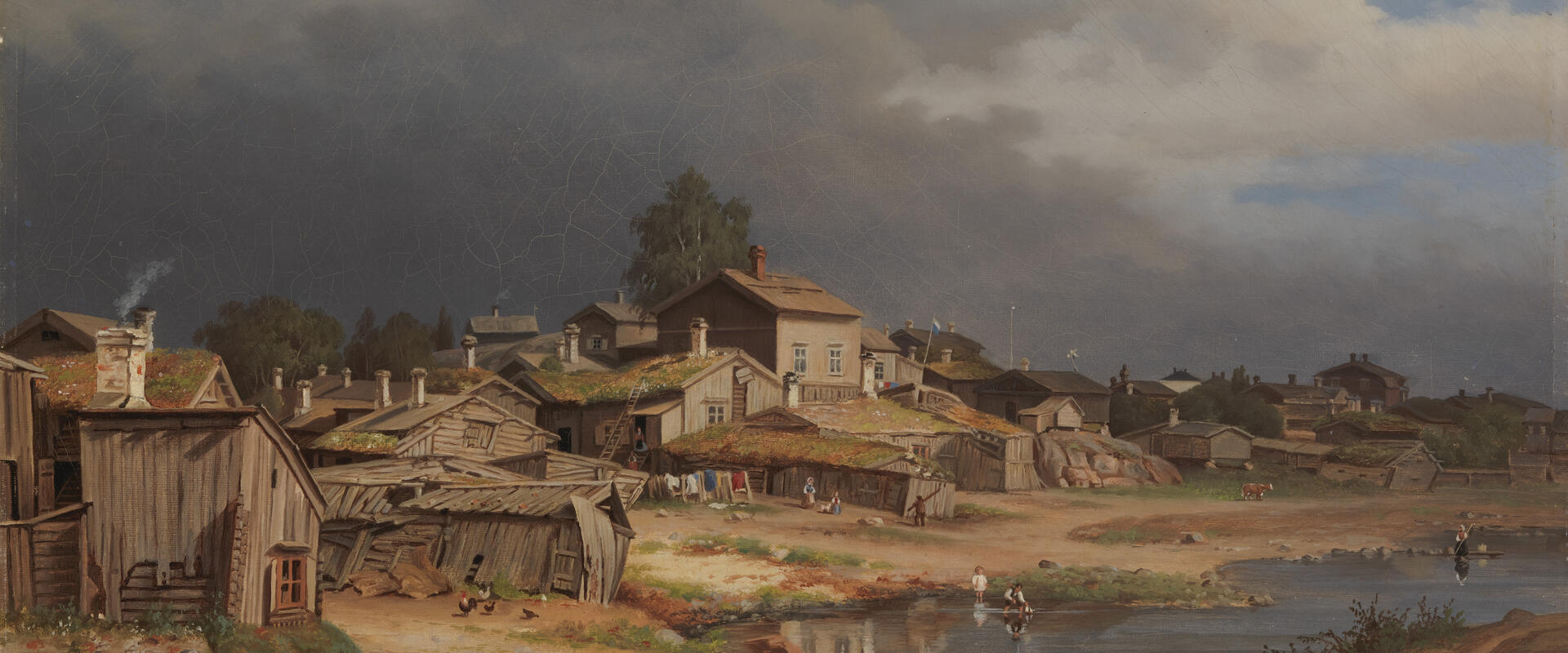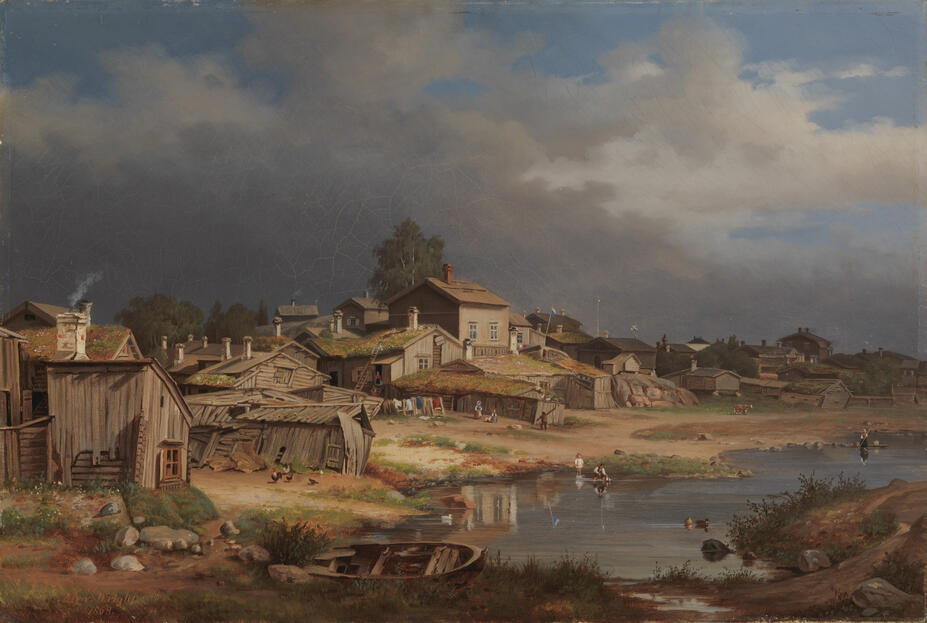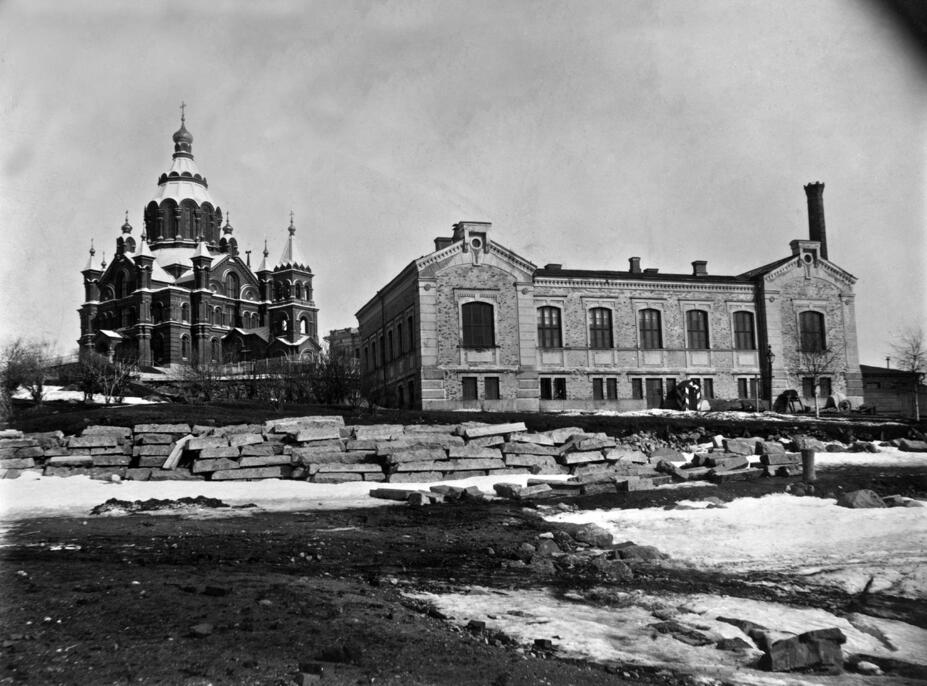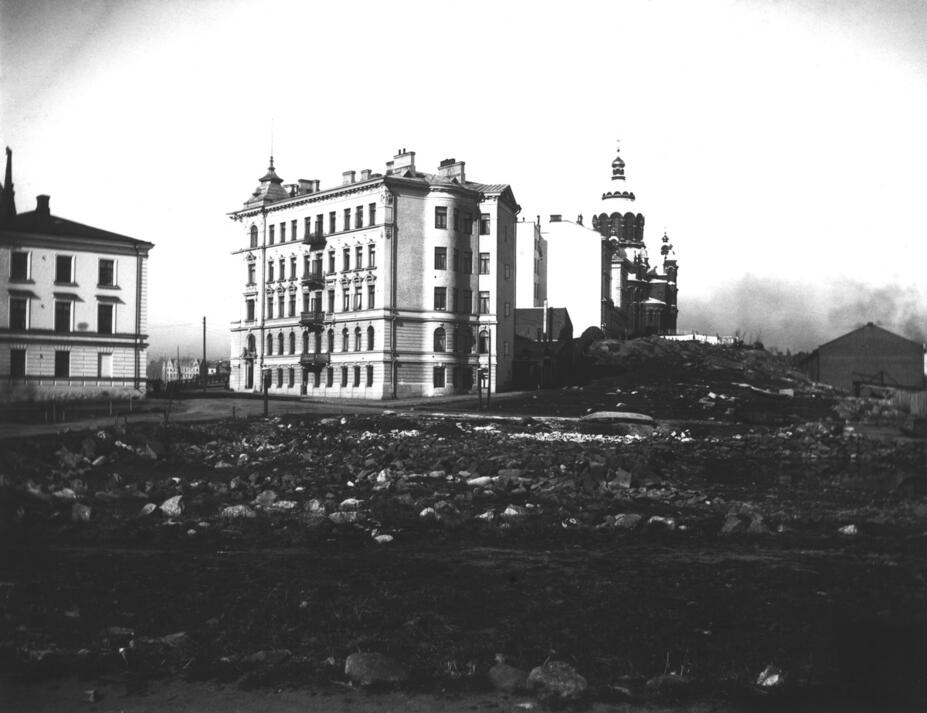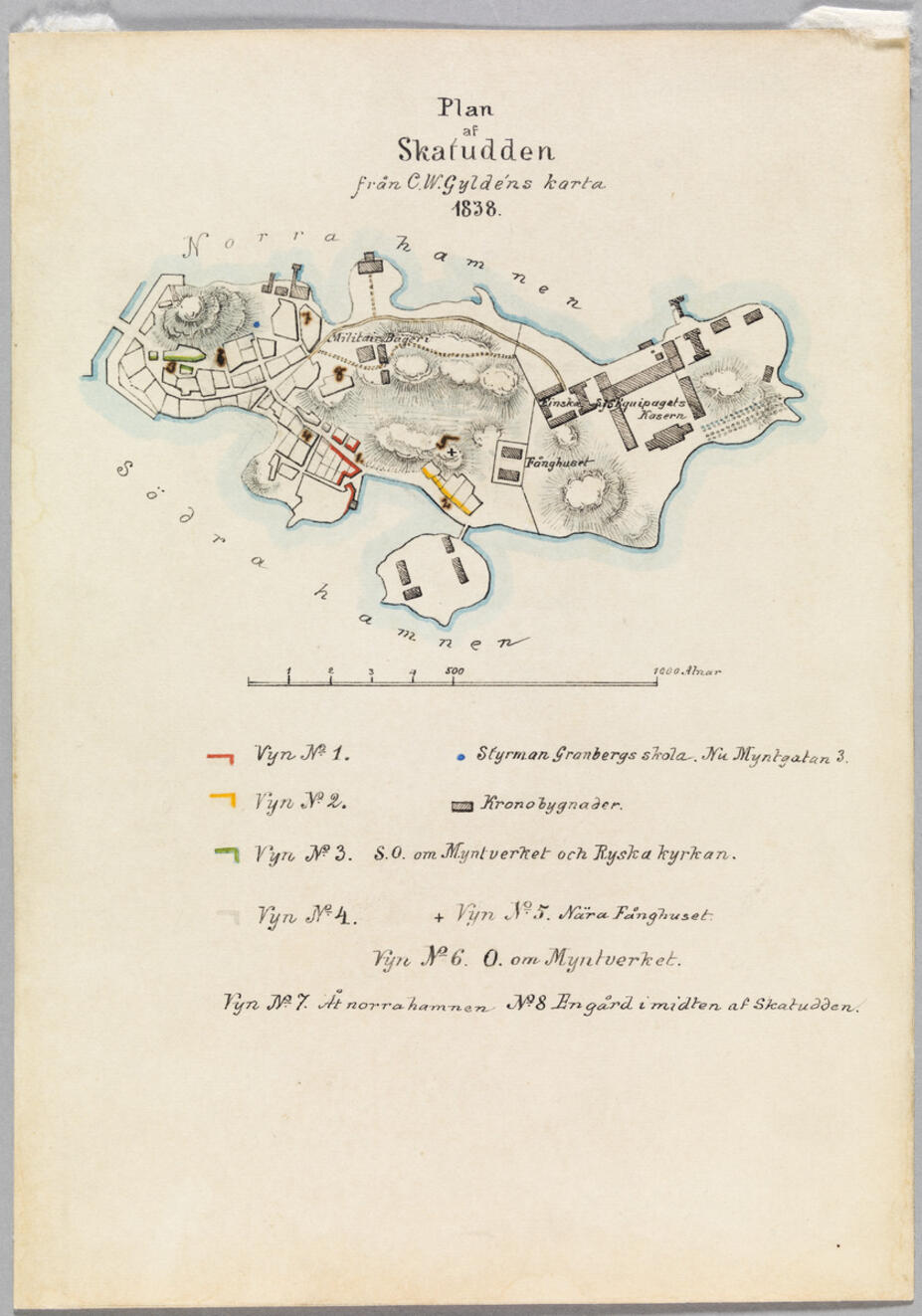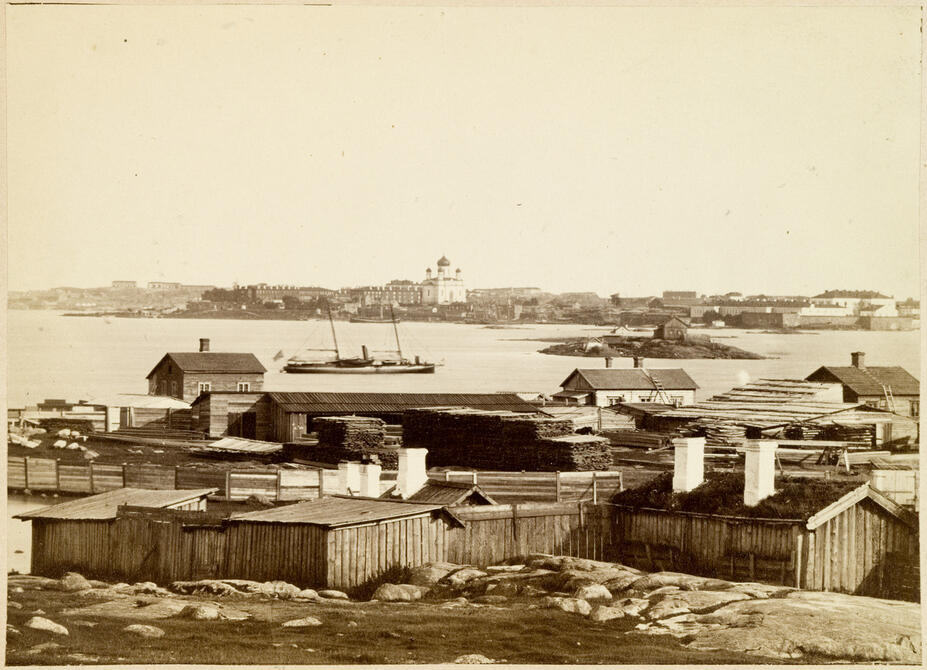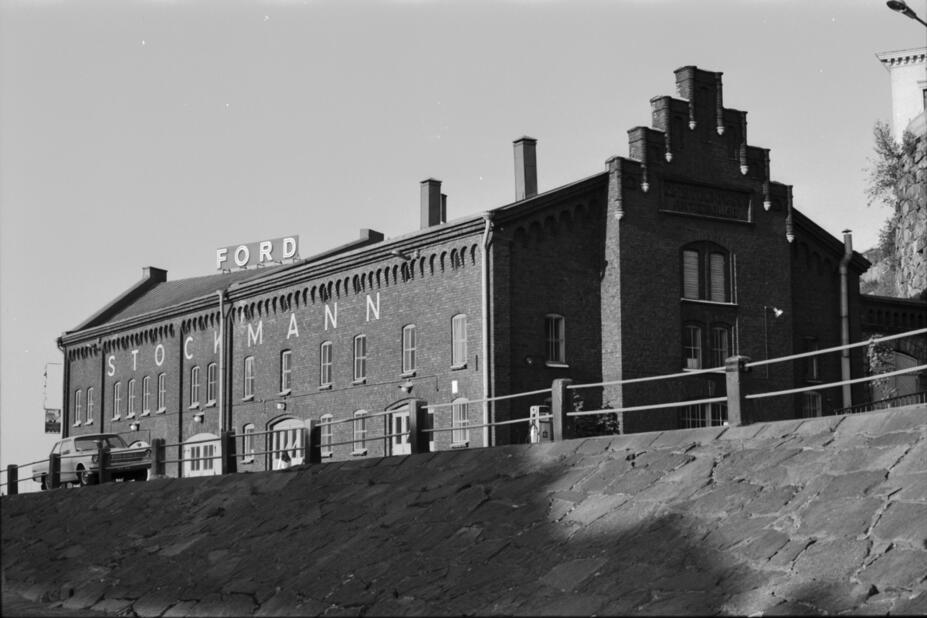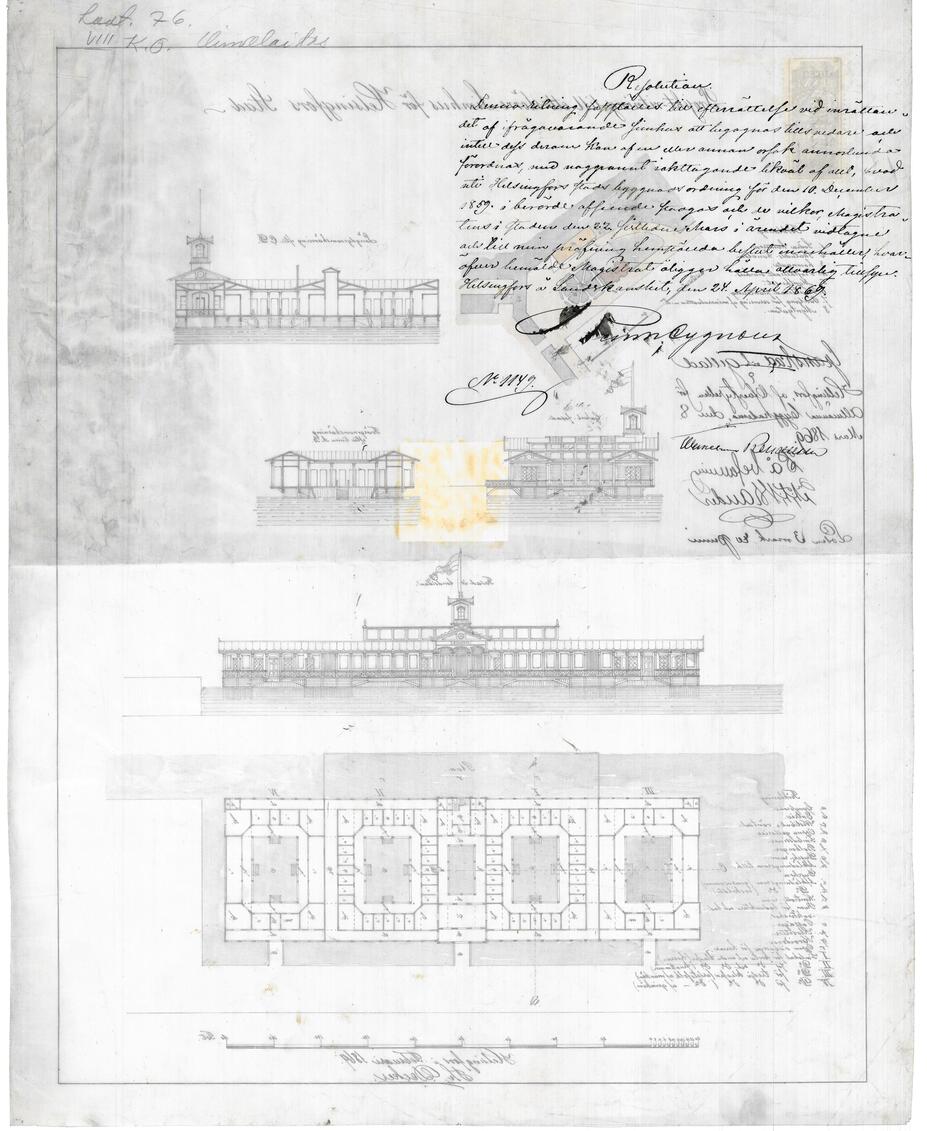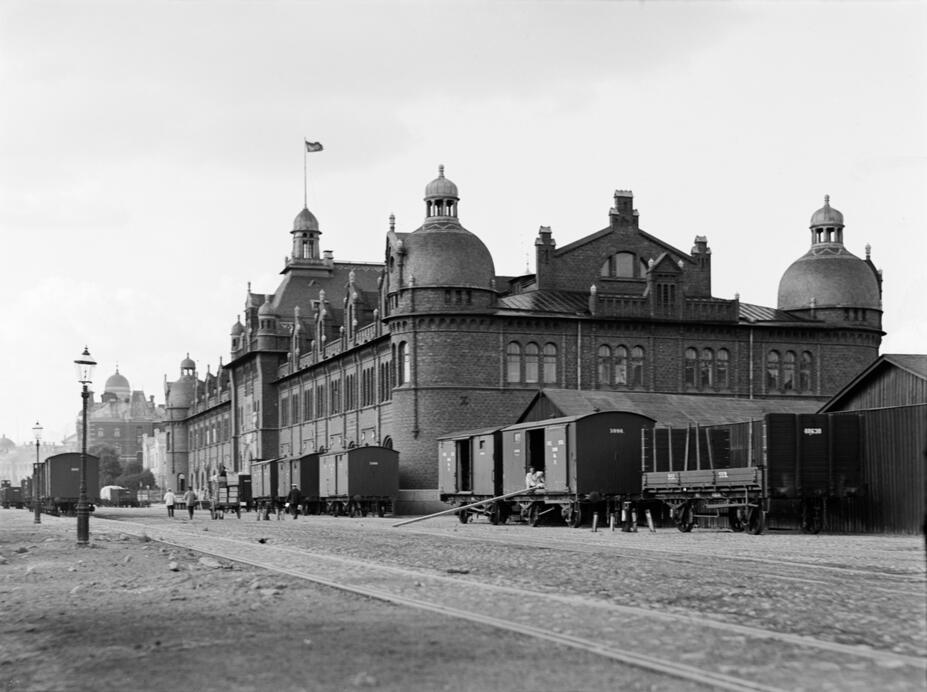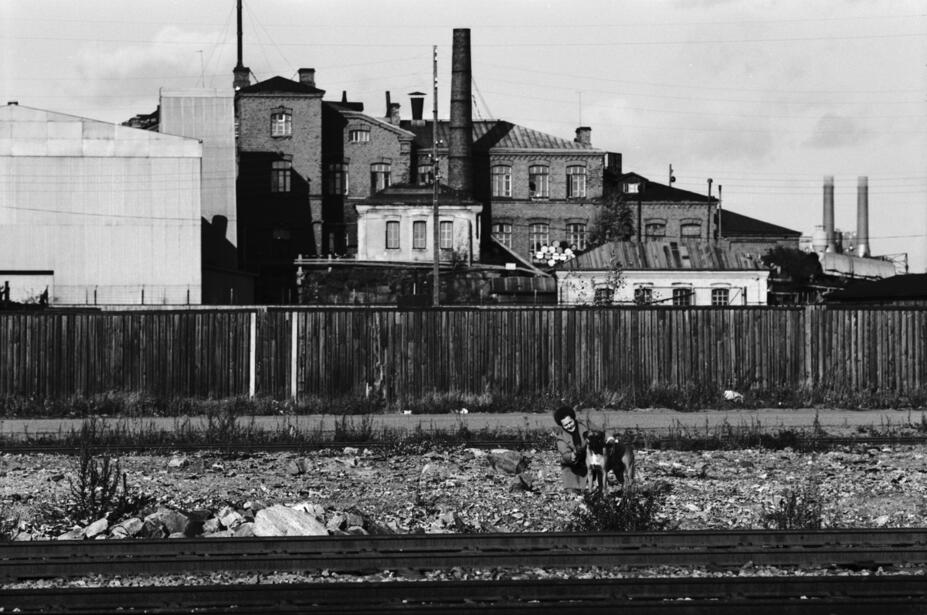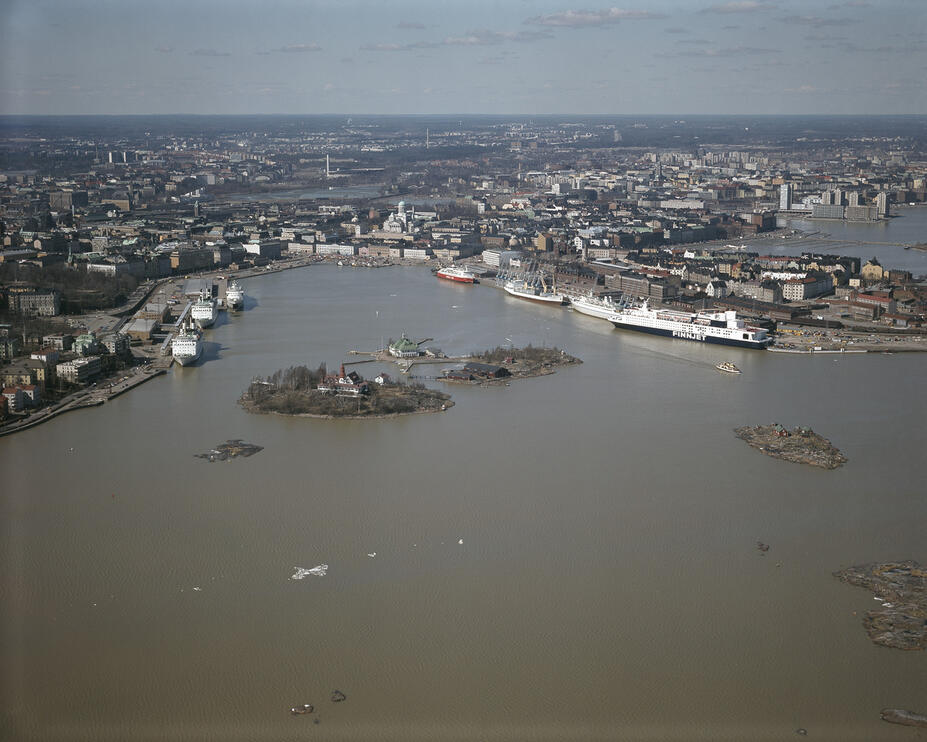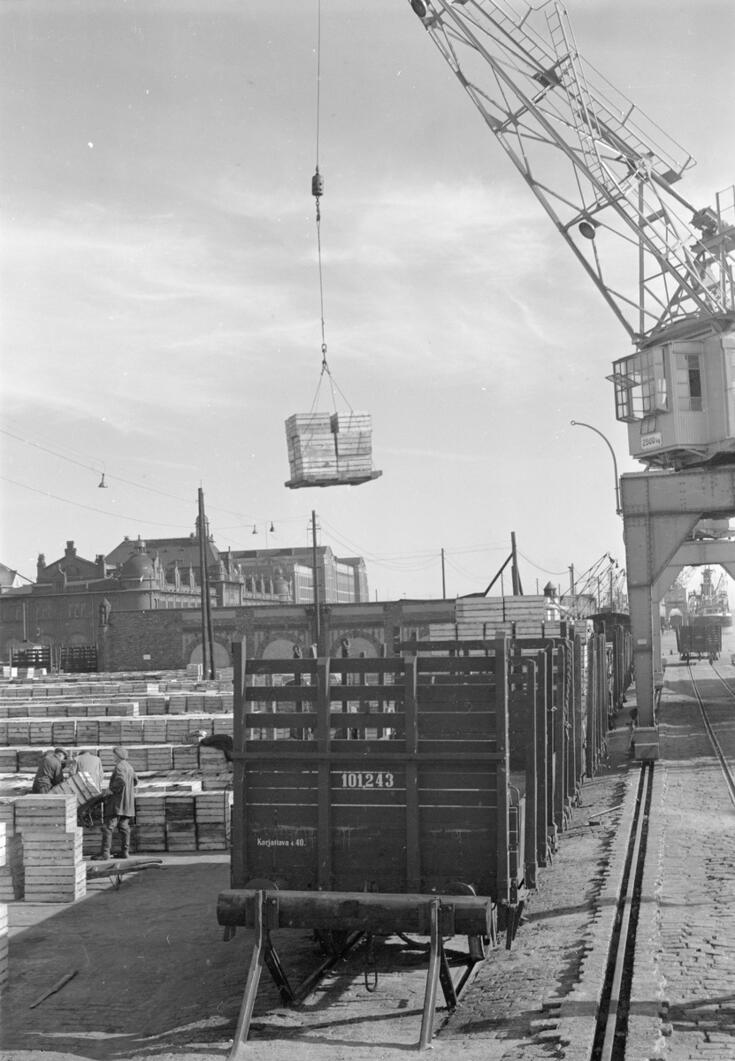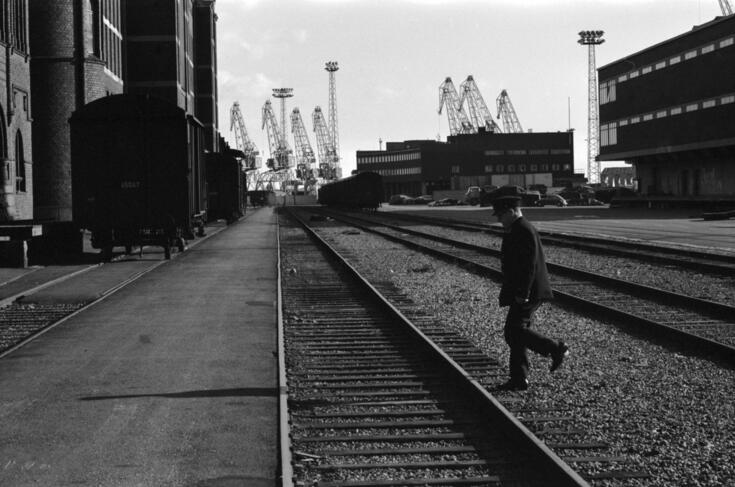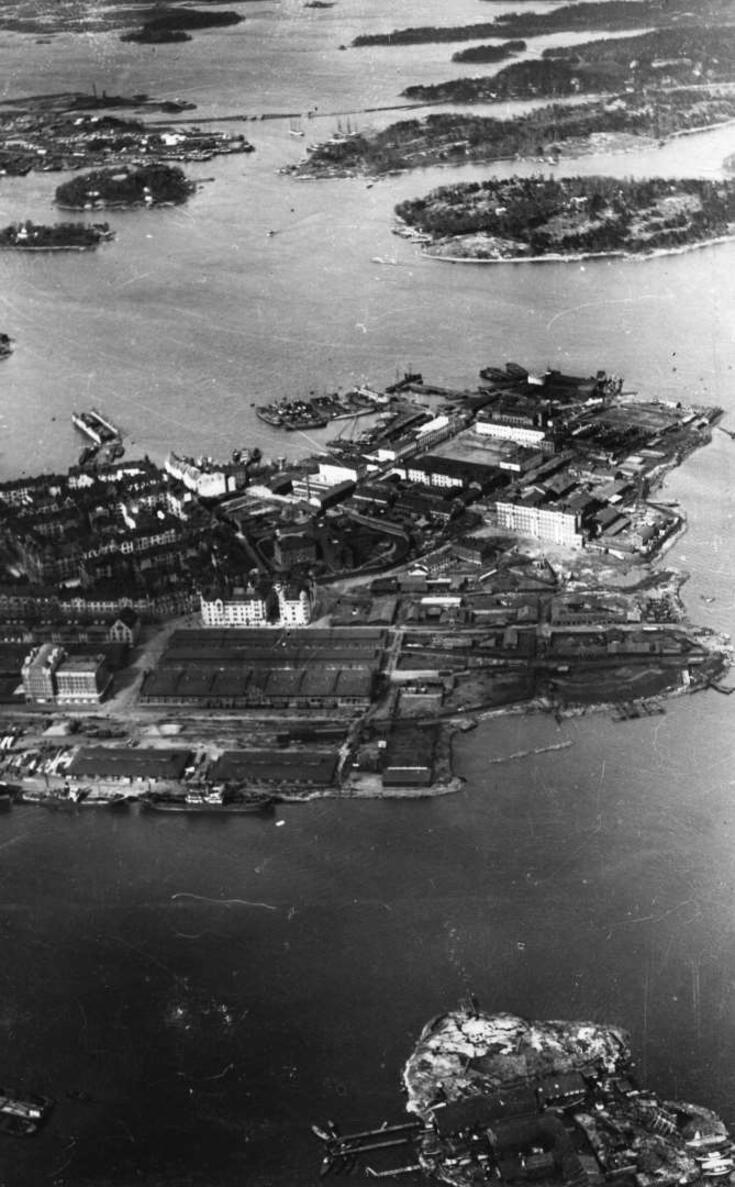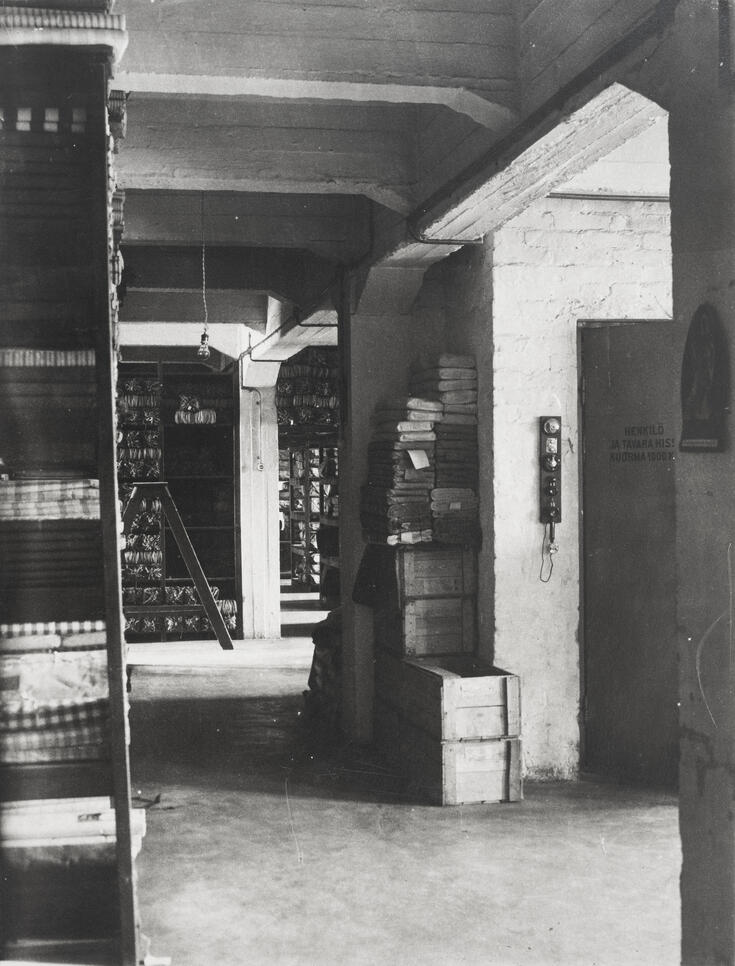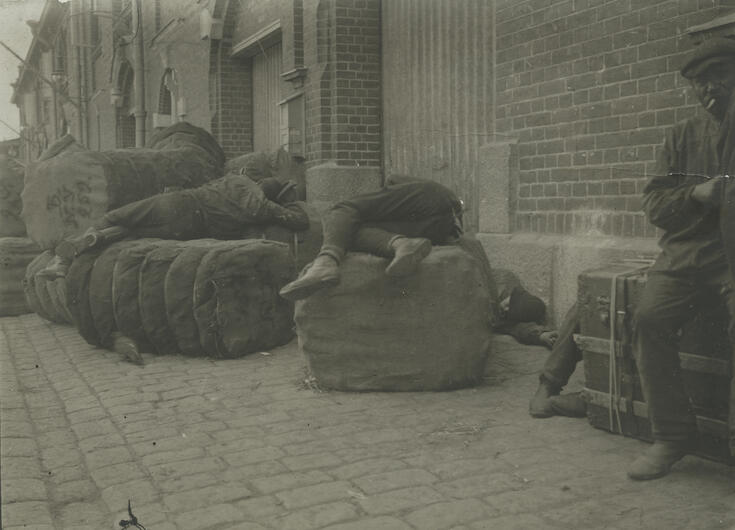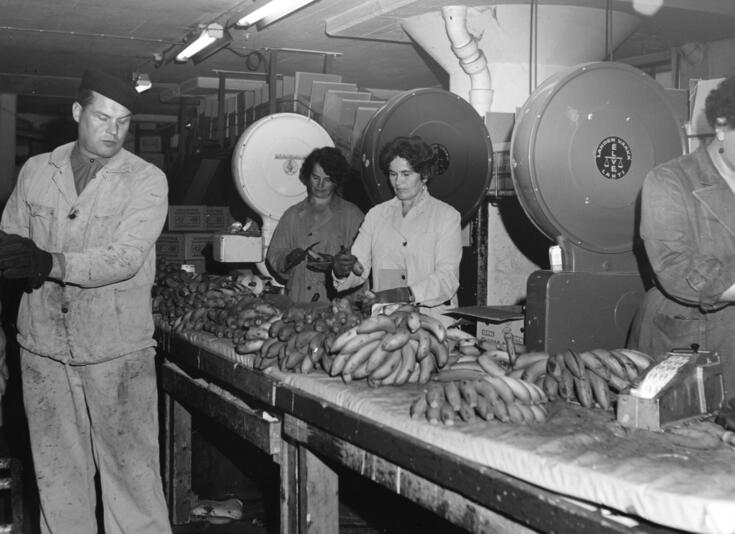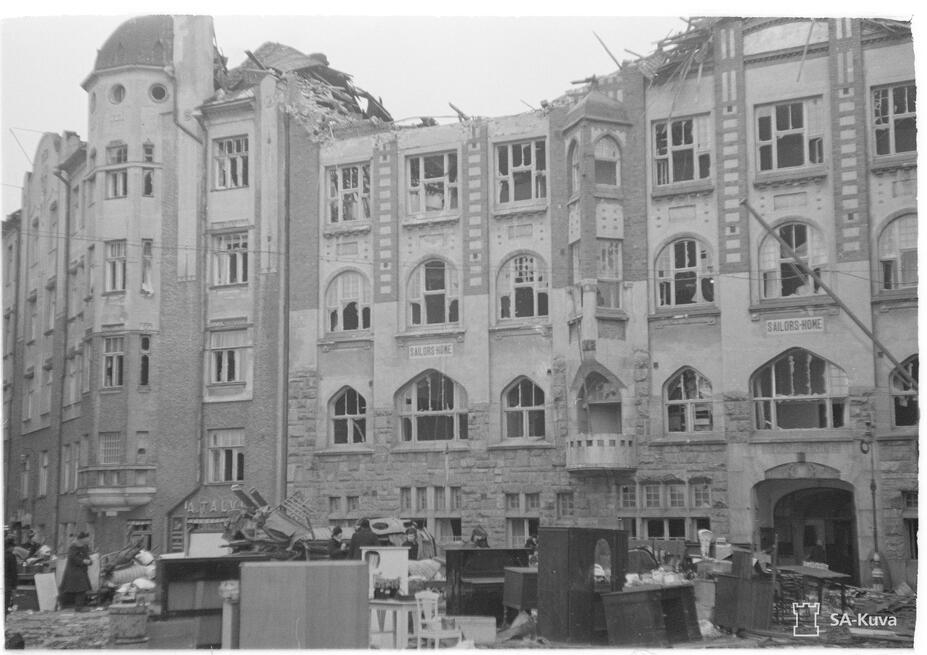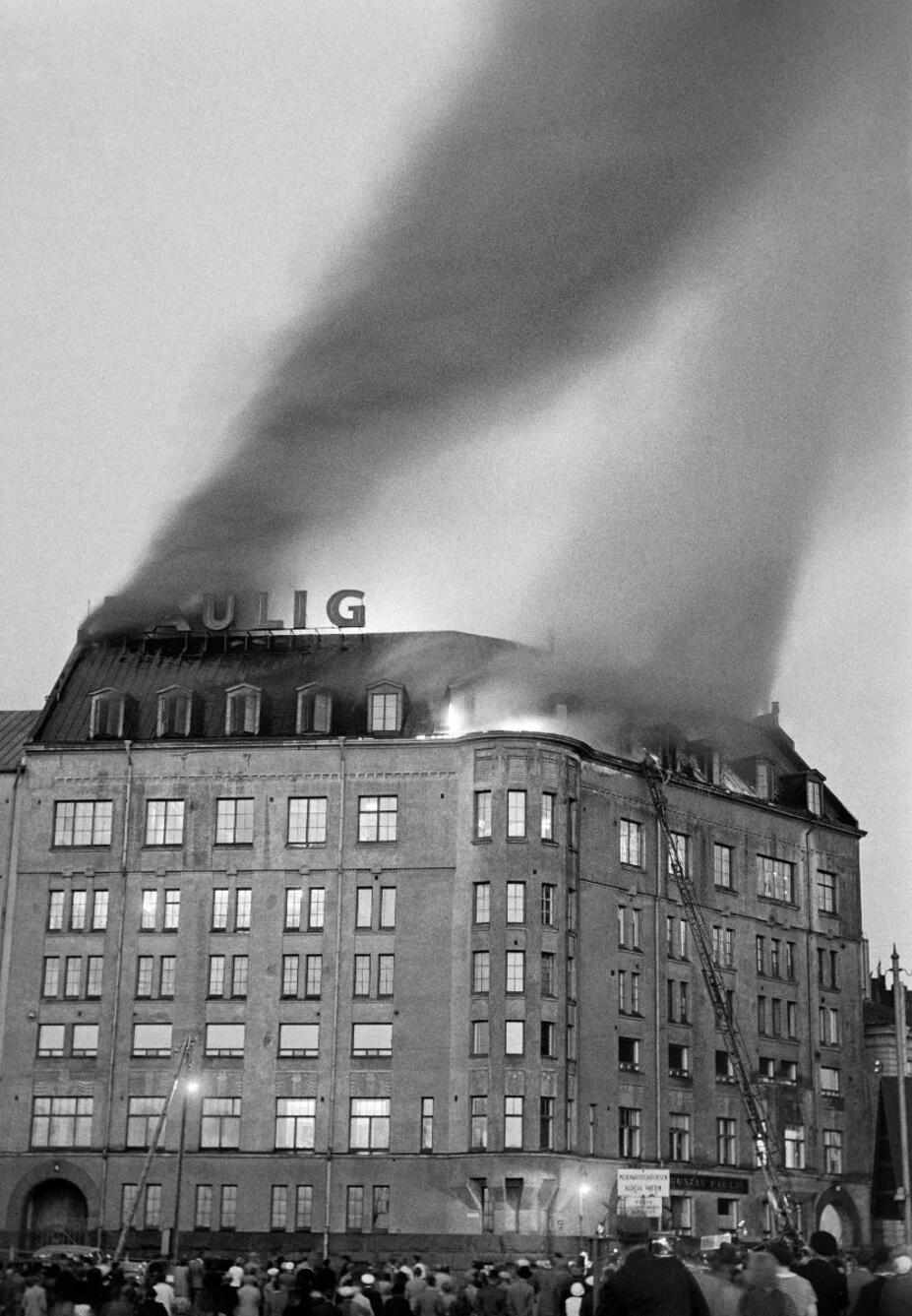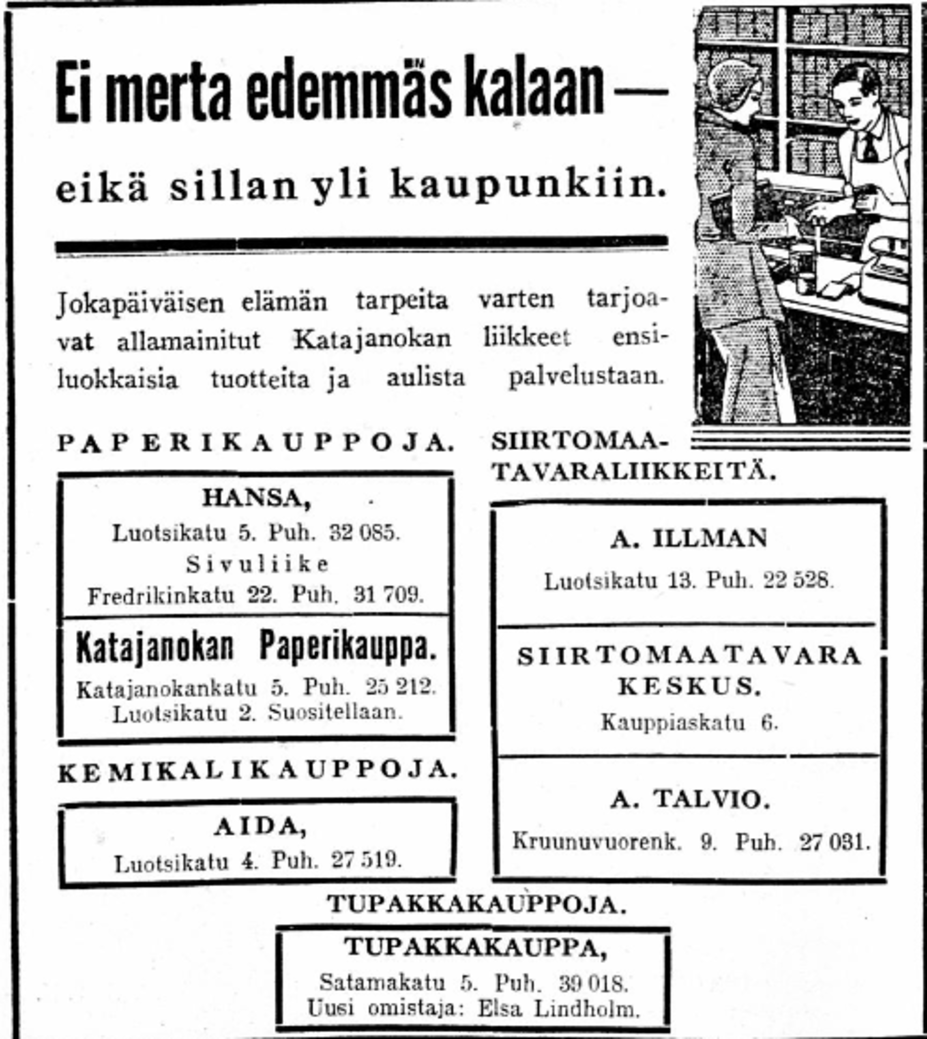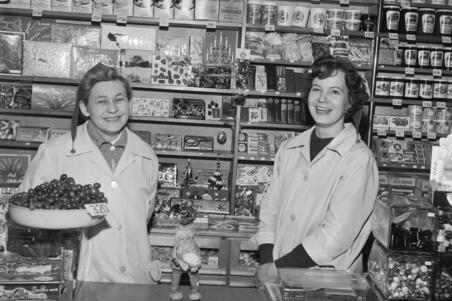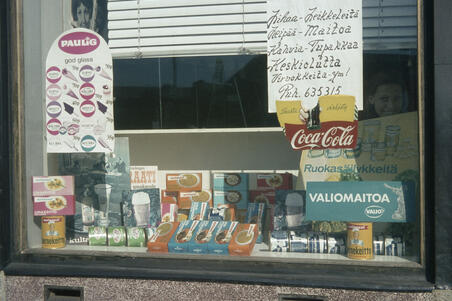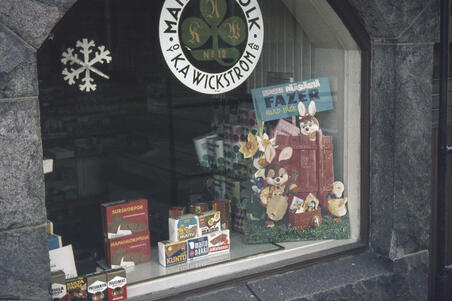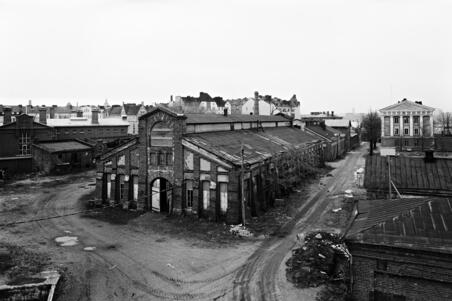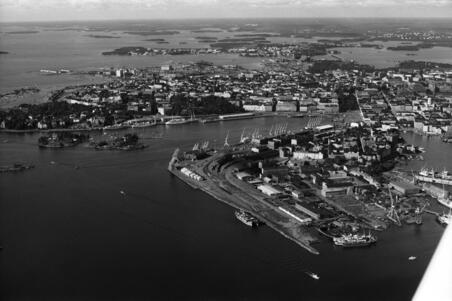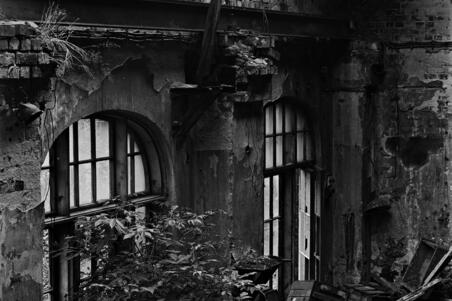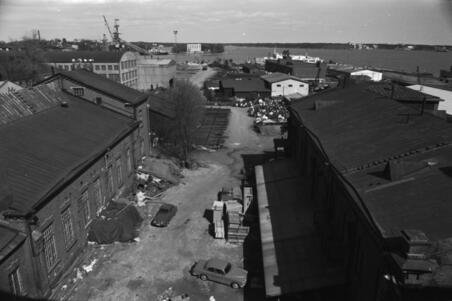A dirty shanty town for the poor
At the end of the 17th century, the city of Helsinki consisted of four blocks, the southeastern one of which was the "Fiskarback qwarteret” on the west side of Katajanokka, which was inhabited by fishermen. In addition to the fishermen's cottages, Katajanokka had a brick factory and the crown's tax and grain warehouses. In the middle of the 18th century, the crown’s prison was established in the area, which was surrounded by a spruce fence with five rooms and a wooden house with a hallway. Prison breaks were neither difficult nor unusual.
The location of Katajanokka between the two ports was strategically significant, and the fortification of the district was planned before the officials decided to fortify Suomenlinna. Helsinki becoming the capital in 1812 also gave a boost to the construction of Katajanokka; however, until the early 19th century, Katajanokka was an unzoned residential area on the outskirts for poor seamen and workers, with mostly wooden shacks. Next to the new monumental centre of Helsinki, the crumbling look of the area stood out. There were only a few larger buildings on Katajanokka: Merikasarmi (1825), by Engel, which was linked to the military area of Sveaborg, and a mint designed by Ernst Bernhard Lohrmann (1864). The canal connecting the ports was built in 1844, when Katajanokka turned from a peninsula into an island.
The newspapers were aghast of how dirty Katajanokka was and began calling for action. The Helsinki correspondent of the Suomalainen Wirallinen Lehti magazine, pseudonym I. S-la, wrote on 29 September 1873 that Katajanokka is a wretched part of this beautiful city, despite being located in the most scenic location in the area and "at the foot of it is the new and beautiful cathedral of the Greek Church, and across the south-side street is the Mint of the Bank of Finland." They say that there are only a few public buildings in Katajanokka, but that there is just the one private decent stone house, which was built by a merchant, in which “better folk” live in as renters. The other houses are shacks, and the people that live in them lead wanton and unclean lives. On rainy days, "terrible filth and foul smells spread from them to the passages". When the magistrate has disposed of shacks, the poor turned to homelessness, staying in dirty storehouses and barns, possible also in stables. What’s also striking are the dealings of certain sirens, which contributes to many types of scandal. The writer hopes that, in these times of housing shortage, the room owners would select people who support themselves by honest and permissible means as their tenants.
Public red-brick buildings: prison, cathedral and storehouses
In 1837, a new prison was erected in Katajanokka. The prison was expanded in the 1880s, when it was converted from communal halls to cells. At that time, the prison received its cross-shaped floorplan. The prison held detainees, vagrants, criminals and political prisoners. All the best known criminals in Finland, such as bank robber Volvo-Markkanen and marriage scammer Ruben Oskar Auervaara, did time at Helsinki County Prison, or Nokka, while awaiting trial as detainees, after which they may have been sent to prisons in Finland. Oskar Auervaara's reputation had reached mythical proportions, and when the rumoured scam artist arrived at Nokka, the other prisoners were surprised by his small size and modest appearance. Regardless, he soon managed to charm the prison clerk and many others.
In February 1944, a bomb hit the prison, which ignited the prison bakery and the prisoners had to be released from their cells so as to not perish within. The prison ceased operations in 2002, the premises were renovated, becoming a hotel in 2007.
Prison employees had employee housing in the neighbourhood of the prison. 12-year-old Alexis Stenvall, who had moved from Nurmijärvi to the city to study, rented a room from Winblad, the caretaker. He attended the Carl Johan Granberg’s school for the poor, who had been a mate that transitioned from a seafarer's life to education, where strict discipline and the schoolmaster’s ill-tempered wife ruled. Old Man Granberg has probably served as the inspiration for the church keeper, from whose school the seven brothers of Jukola run away. This is what journalist Victor Pettersson (1849–1919), who attended the Granberg School, remembers:
Old Man Granberg was not a good teacher, but to raise children "in discipline and rebuke", he was the right man. On 26 May 1868, the old man died, having always made use of the rod in the service of Enlightenment.
Granberg, the old mate, died at the age of 81, and according to Victor Pettersson, many former students and sailors attended his funeral. In January 1903, Pettersson organized a meeting at Hotel Fennia for former students of the school, including ones that had learned navigation.
Architect Carl Ludvig Engel had proposed an imperial palace on the highest cliff of Katajanokka in 1836, but the emperor did not like the idea. Instead, the Orthodox Uspensky Cathedral, designed by Alexei M. Gornostayev, was built on the site, taking six years to build. The church was consecrated on 25 October 1868.
In 1878, the Helsinki City Council outlined that the south side of Katajanokka should be reserved only for the needs of trade and shipping, and only storehouses should be built on the plots there. Storehouses were built in 1867-1903 initially on the northern shore of Katajanokka, and later on the southern shore. Warranttitalo, one of the largest warehouse buildings in the Nordic countries, occupied an entire block and was built in stages during 1913–29. The central warehouse of Oy Alkoholiliike Ab, established after the end of the Prohibition Act, was placed there. Warehouse work was hard work, and the staff included reputed athletes, such as boxer Gunnar Bärlund, javelin thrower Matti Järvinen and swimmer and sports commentator Pekka Tiilikainen. Warranttitalo, or storehouse K 12, was converted into a hotel according to the drawings of architectural office Gullichsen – Kairamo – Vormala in the early 1990s.
At least six hectares of additional land were been added to the southern shore of Katajanokka. The shape of the island and the former peninsula has been significantly modified over time.
Fashionable sports hub
In the 19th century, Katajanokka was a sports hub, whose hilly terrain attracted skiers and sledders in winter. Helsingfors Skridskoklubb, a skating club, was founded in the 1870s, which maintained a popular skating rink. Skating was a fashionable hobby at the time. The first skiing competitions in Helsinki were held on the northern shore of Katajanokka in the 1880s.
Swimming became a fashionable hobby at the end of the 19th century, but it was supposed to take place in gender-separated swimming facilities not, for example, from piers. Swimming skills were rare, and swimming clubs organised teaching at swimming facilities. Lars Krogius and Viktor Heikel founded a swimming school near the current casino in 1883. The swimming pool was damaged in the autumn storm of 1890 but was later repaired. When seawater became polluted and ship traffic picked up, the activity faded.
Harbour hubbub
For a long time, lively port operations gave Katajanokka its character. Many passenger ships and cargo passed through Katajanokka, and the Valmet shipyard operated there from 1919 to 1975. When the shipyard moved to Vuosaari, the area was transferred to the Ministry of Foreign Affairs. As import and export goods passed through the port at Katajanokka, the area focused on wholesalers' storehouses where the goods were stored, processed and packaged. There was a great deal of delivery traffic, and due to the growing traffic, filling the canal was considered in the 1940s-60s. Train transportation carried on for surprisingly long: The harbour tracks to Katajanokka were completed in 1895, and the railway network was expanded in the 1930s and 1960s. Accidents sometimes occurred with freight traffic, such as collisions between delivery trucks and trains as well as train strikes. The dismantling of the harbour tracks began in the 1970s.
After the previous customs and storage halls in Kruununhaka grew too small, a new red brick building was built in Katajanokka. The large building, designed by architect Gustaf Nyström, was completed in 1901. At the time, its style was considered old-fashioned, but the passage of time has added to its appreciation.
Respected residential area
At the end of the 19th century, people started building spectacular stone houses in the western part of Katajanokka, behind the Uspensky Cathedral. Kauppaneuvos Julius Tallberg bought the plot that had been the garden of the adjacent Deaconess Foundation from the city, and arranged an architectural competition with the Association of Architects. The first and second prizes were won by young architects Herman Gesellius, Armas Lindgren and Eliel Saarinen, who had participated with two different works. The house, built by Tallberg, was completed in 1897, and Albert Edelfelt was one of its first tenants. The house later came to be called the Paulig House, as it housed Paulig's sales office. The two adjacent buildings housed Paulig's coffee roastery and warehouse.
In a short period of time, decorative and sturdy stone houses designed by prestigious architects were built in the western part of Katajanokka, making it a residential area for wealthy people. Luotsikatu 4, designed by architect Gustaf Estlander, was completed in 1906. The house had three studio apartments, which means that many artists lived in the house. One of the studio apartments, after being vacated by Hugo Simberg, was the home of artist couple Viktor Jansson and Signe Hammarsten-Jansson, who had a daughter in 1914. One hundred years later, the adjacent park – for a long time the only one in Katajanokka – was named Tove Jansson Park.
The February 1944 air raids caused damage in Katajanokka. The most tragic case was the Alanko House, with tens dying in the basement bomb shelter. Built in 1905, the house was completely destroyed, being rebuilt later by the city as a rental building.
Sailors’ Home, designed by Selim A. Lindqvist and completed in 1907, was also destroyed, and buildings poorly suited to the environment were built on the plot in the 1950s and 60s, which were demolished due to deterioration and mould damage in 2014.
The eastern part of Katajanokka, or the Tip, was released for construction use when the Valmet shipyard moved to Vuosaari and the naval garrison was rebased to Upinniemi. A zoning competition was held for the area, which was won by architects Vilhelm Helander, Pekka Pakkala and Mikael Sundman. The new residential area was built in 1977–86.
